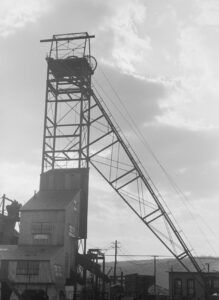
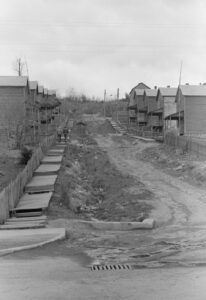 As mining work started up in the United States, the need for housing in the area of the mines started up too. This need brought about the “company town” as a place where all or most of the stores and housing in the town are owned by the same company. Of course, this meant that quite often, all or most of the wages paid to workers, came back to the company in purchases, and as we all know stores and such always have a markup so that they make a profit. Still, they did meet a need, and there was often nowhere else to go. Company towns were often planned with a number of amenities such as stores, houses of worship, schools, markets, and recreation facilities.
As mining work started up in the United States, the need for housing in the area of the mines started up too. This need brought about the “company town” as a place where all or most of the stores and housing in the town are owned by the same company. Of course, this meant that quite often, all or most of the wages paid to workers, came back to the company in purchases, and as we all know stores and such always have a markup so that they make a profit. Still, they did meet a need, and there was often nowhere else to go. Company towns were often planned with a number of amenities such as stores, houses of worship, schools, markets, and recreation facilities.
The initial motive of building the “company towns” was to improve living conditions for workers. Nevertheless, many have been regarded as controlling and often exploitative. Others were not planned, such as Summit Hill, Pennsylvania, United States, one of the oldest, which began as a Lehigh Coal and Navigation Company mining camp and mine site nine miles from the nearest outside road. Just being that far from anything else around, was prohibitive to those who felt like they were the victims of gouging. Today, many of those “company towns” are ghost towns…lost to a bygone era.
One such town, the town of Kempton, West Virginia was located just a few feet inside the West Virginia border. This strategic location allowed the company to operate using scrip rather than cash. To me that seems like a move to a cashless system that further held the workers there, because the scrip was only accepted at the company businesses, thereby eliminating outside competition. As with any monopoly, this created price 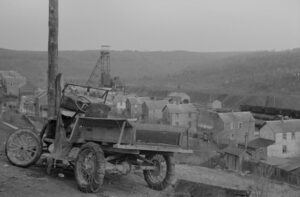 gouging. To make matters worse, if an employee needed a “big ticket” item, such as such as washing machines, radios, and refrigerators, they could get them and make payments. This put many miners in debt, and they were required to pay off the debt before they could move away. The town of Kempton was “founded in 1913 by the Davis Coal and Coke Company, a strip of land 3/4 of a mile long and several hundred feet wide was cleared for the construction of company houses, four to six rooms each with a front yard and a garden in the back. In 1915, J Weimer became the first schoolteacher at $40 a month with 53 pupils. The company store was located on the West Virginia side along with the Opera House that contained the lunchroom, bowling alley, pool table, dancing floor, auditorium, and the post office.” These towns were in reality, “privatized” towns run by a government that was neither elected nor fair, they were simply the ones in control, and if people wanted a job they dealt with the rules.
gouging. To make matters worse, if an employee needed a “big ticket” item, such as such as washing machines, radios, and refrigerators, they could get them and make payments. This put many miners in debt, and they were required to pay off the debt before they could move away. The town of Kempton was “founded in 1913 by the Davis Coal and Coke Company, a strip of land 3/4 of a mile long and several hundred feet wide was cleared for the construction of company houses, four to six rooms each with a front yard and a garden in the back. In 1915, J Weimer became the first schoolteacher at $40 a month with 53 pupils. The company store was located on the West Virginia side along with the Opera House that contained the lunchroom, bowling alley, pool table, dancing floor, auditorium, and the post office.” These towns were in reality, “privatized” towns run by a government that was neither elected nor fair, they were simply the ones in control, and if people wanted a job they dealt with the rules.
Cut out of the Appalachian wilderness, the town of Kempton flourished and became a vibrant community rich in culture and familial spirit. Then, when the mine closed in April of 1950, it just as quickly faded into oblivion. Nevertheless, the former residents tried to keep their connections alive. They held a reunion in 1952 to share their memories and to recall a strong sense of home. Unfortunately, what were once good intention, faded as life got busy and people moved around. Finally, the forest began to reclaim many of the houses as weeds took over and neglect allowed for decay. These days, the fruit trees and annual flowers that were planted long ago 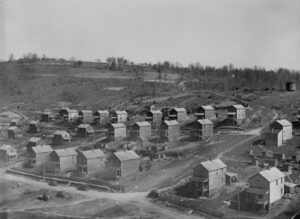
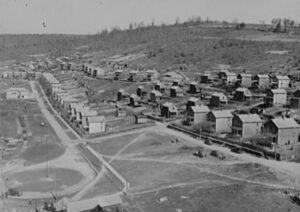 by people who loved the place “still bloom to greet the Spring” and a few of the broken-down buildings still dot the landscape, if one in incline to look around. Newer homes have been built, that are privately owned, and mixed in are a few of the old remnants of times past. With mine reclamation laws in place now, groups have come in and performed archeological digs to recover old work items from the past and restore the site to historical status.
by people who loved the place “still bloom to greet the Spring” and a few of the broken-down buildings still dot the landscape, if one in incline to look around. Newer homes have been built, that are privately owned, and mixed in are a few of the old remnants of times past. With mine reclamation laws in place now, groups have come in and performed archeological digs to recover old work items from the past and restore the site to historical status.


Leave a Reply